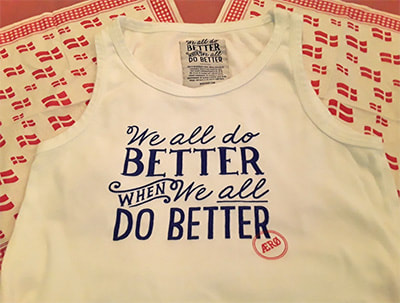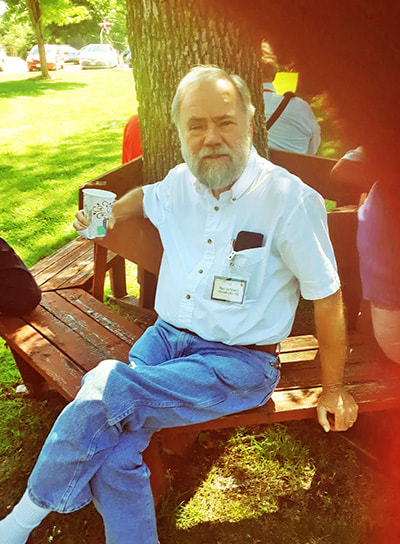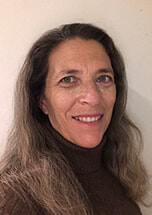 By POUL BERTELSEN Initially the topic seemed like an easy subject, but I have had to change my mind. For it presently is a challenging topic for a Dane trying to live egalitarian values in the USA. Thus note the following slide of a T-Shirt, which Susanna bought in Denmark, and which says it all. Both Denmark and USA are established democracies, but still difficult to compare. For Denmark is very old and the USA is just getting close to being 250 years young. Also notable, I am not an immigrant to the USA, but instead a resident alien.  Poul Bertelsen Poul Bertelsen I came to the USA to start MSAADA [a non-profit architectural firm] and to follow my wife’s wish to live in her country. That seemed natural, as I was expecting to travel a lot, as has also been the case. Rather challenging, though, is to live out Danish egalitarian values in the USA, as I have learned. Much easier to follow Hans Christian Andersen’s statement of “to travel is to live.” But, I continue to believe my living and traveling should be based on the values I got as a kid in Denmark. I have often stated (maybe arrogantly) that Danish Americans live a fantasy. So much has changed in Denmark since your ancestors left the country. And today many young Danes tell me that I have a romantic idea of what Denmark was. Maybe I am now the one getting behind with the many changes in Denmark recently. Further, I see most Danish Americans as naturally being more American than Danish. It was a strange experience years ago, when we saw the film “Der er et yndigt land.” Good, though, to be with so many Danish Americans in a Folk Meeting focusing on what N.F. S. Grundtvig taught related also to present day Danish values. I thought that such a similar situation realistically might even be somehow difficult to find in today’s Denmark. But, I then saw an article regarding Folk High Schools in Denmark now. It suggested a need for “more Grundtvig” in their courses. The article also suggested need for a new “Grundtvig’s vaekkelse” in Denmark. I assume, though, more like an awakening in English than a revival. Also, there are questionable changes today not only in Denmark, but also in the other Scandinavian countries, and in Finland and Iceland. However, what the social democratic parties created in Scandinavia in the mid-20th Century seems still to be an ideal. The Nordic model is being emulated in the Developing World and now elsewhere. “The Almost Nearly Perfect People” by Michael Booth tells about why that may be. The author set out to destroy “the myth about the Scandinavian utopia.” But Booth concludes his book with stating how not many countries are as ideal and free of corruption as the Scandinavian (or Nordic) countries. And while many in the USA like to identify those countries as being Socialistic, the reality is more (as I see it) how that ideology has been successfully used to create a balance for capitalism. Nordic countries usually take top spots yearly among “Happiest People in the World.” And those countries with less inequality still have some of the world’s highest average incomes. The financial inequality in the USA is something I never can or will be comfortable with. But it is also sad to realize great inequality (or disparities) in many Developing Countries. I went to Africa with the idea that wealth should be better distributed in the World. That was also a goal of the first Tanzanian president (Julius Nyerere) with “ujamaa.” Pure capitalism and pure socialism are in my opinion both rather limited systems. It seems, though, the USA model is most popular in the world today; it still needs adjustments. Thus, I hope those in USA today being called socialists will also use it to balance capitalism. Similar also to Grundtvig’s idea of a society where “faa har for meget og faerre for lidt.” [Few have too much and fewer have too little.] African socialism in Tanzania promoted the same idea under Mwalimu Nyerere’s leadership. But, today the situation is different in Tanzania as developed under later presidents. When Nyerere died, it was indicated he was a great politician, but maybe also naïve. So, maybe I am also naïve, as I had a rather high living standard in my early adult years. Considering that also, how did a rather well off young Dane become a missionary? And how did he end up in the USA, since he also was a product of the sixties in Denmark (which had a strong opinion against the Vietnam War)? That is a story in itself, but you can find it described more in my book “Design & Dignity,” which was published in 2012. The Birth and Development of MSAADA Architects In short, I ended up initially as a missionary builder in Nigeria for about a year. After 1½ years in Ohio, I realized Nigeria had started something I had not finished. It is also no secret, how in Ohio I did not know, whether I was indeed fit to live in the US. Susanna and I then went to Tanzania for six years to serve the ELC-Tanzania sent by the DMS. Those were maybe my best years, and further Susanna’s and where our first two children were born. Tanzania also resulted in the idea to afterwards start MSAADA Architects and to do so in Minnesota. Getting a lower salary for something benevolent vs. earning a lot and giving a fraction away! MSAADA practices not having a big difference between the highest and lowest paid staff. Doing something meaningful and valuable for fellow humans should involve financial sacrifices. This has also been the practice in MSAADA so far, but it seems not possible any longer. So we have had to accept that the mighty dollar controls almost everything. I had a situation during my first four years as an architect in Denmark where that was valid. When it comes to social welfare and justice, financial considerations should not control everything. Maybe having to deal with accepting the opposite in the USA more than anything what has made it complicated for me to live Danish values in the USA. In Nordic countries, public monetary investments are made so they benefit as many as possible. Although also questioned by many today in Denmark, I hope the Nordic model will survive. That was a model Grundtvig also prepared for in addition to his many other great contributions. You all know how those were for the Church as well as by initiating the Folk High School movement. The latter is now being emulated in the Developing world, which is most encouraging. Also note USA & Denmark differences in government funding of projects in the Developing World. That is also something which indicates the different approach to many things in the USA and in Denmark and the other Nordic countries. MSAADA has so far been blessed to see over 900 projects implemented in close to 40 countries mostly in the Developing World. Those projects have focused mainly on enhancing the lives of “the poorest of the poor,” with better facilities mostly for education, health care and worship. They also have allowed a travel enthusiastic Dane to visit half the world’s countries. I started traveling around Denmark as a kid, and as a teenager started travel within Europe. MSAADA Architects has been a non-profit company for four decades serving mostly the developing world. But, changes required now from 01.01.2020, are based on today’s economic reality in the world. Difficulties with the emphasis on “me”, myself and I” in the USA, compared to “we” in Denmark. President Barack Obama used the term “we,” when he talked about what to accomplish. Obama’s approach combined with Danish values would also mean a better international role for the USA, as after WW II. In the seventies Jimmy Carter was a very popular president from the USA in e.g. Africa. That would then also replace USA as so often seeing itself as the best country in the World. There can be many “best countries,” as I have realized from living in four countries on three continents and visiting so many more. I often want to live in different places at the same time. For I miss Denmark, as I also miss Tanzania after living there for six years and I enjoyed one semester of studies in the UK. Relate that to how USA is often referred to singularly as “God’s own country.” Some U.S. politicians who are most eager to call themselves Christians often act non-Christian. This is different in Europe, where politicians promote Christian values even as non-Christians. In the USA I again see Jimmy Carter as the president who lived out his Christian values. Having more Danish values in the USA would also demand initially much stricter gun laws. I do not understand not having such laws because I do not understand the way freedom is viewed here. For while freedom is great, it also means freedom to be poor and to be forgotten. I thus also believe the USA should have a one-payer system for health care for all its citizens. Having lived in many different countries has taught me much about tolerance, but also about how difficult it is to compare systems with very different backgrounds. That relates not only to different political systems, but also how Christianity is practiced. To me, for example, the Christian message cannot be creditable without social justice. Christianity, though, has historically been interpreted differently and still is by so many who claim to be Christian believers. In Greece, Christianity became a philosophy, in Rome a form of government, in Europe a way of life and in the USA often a business. Am I promoting not only Danish values, but also Christian and political values? That is difficult not to do, as I have not been able to vote for years in Denmark nor the USA. Today with a USA administration I am very uncomfortable with, it is hard indeed. However, it continues to be an advantage to live in Minnesota, which is rather dominated by the Democratic Farmer Labor party. Also impressive is the influence of politicians as Humphrey, Mondale and Wellstone; also it is more acceptable to live in a liberal state with less religious fundamentalism. But I still hope all of the USA might eventually practice more of the Nordic model. That should include opportunities for all, including recent and new immigrants and relate to other ideas promoted today, especially by some of the Democrats presently running for President. A surprise article by a Greenlander suggested her country also has been Americanized. So, the US model has also reached Greenland, but mixed there with Danish social benefits. Trump’s voiced interest in the USA “buying Greenland” might, though, change the Greenlanders’ view of the USA. I did not leave Denmark because I was dissatisfied, so Minnesota has proven to be a good choice in the USA. But, it took an invitation for me to speak here to finally get Susanna and me to Tyler for the Folk Meetings. Since then, Susanna and I have enjoyed the informative speakers and the fellowship here. [email protected]t
0 Comments
Leave a Reply. |
Editor InformationBridget Lois Jensen Archives
March 2023
|
Subscribe | Gift |
Submit an Article |
Contact |
© COPYRIGHT 2019 CHURCH AND LIFE.
|

 RSS Feed
RSS Feed